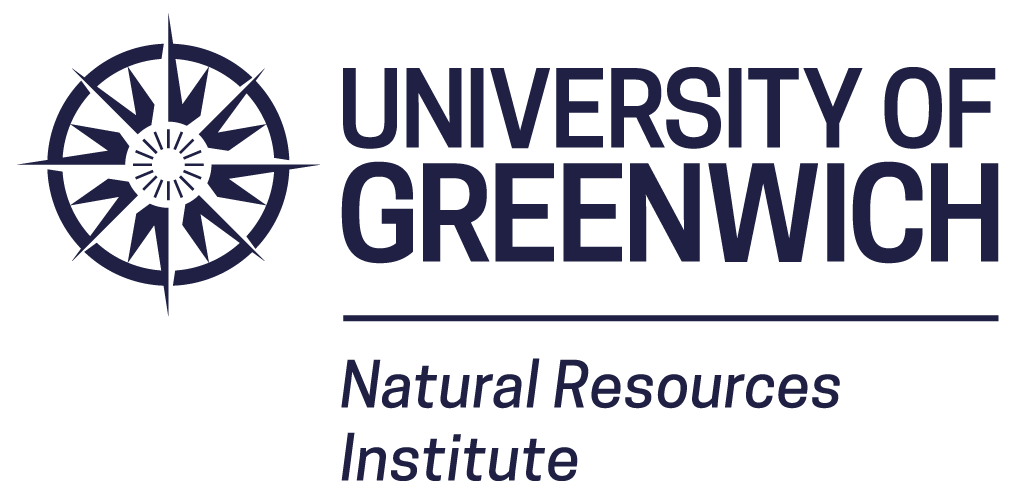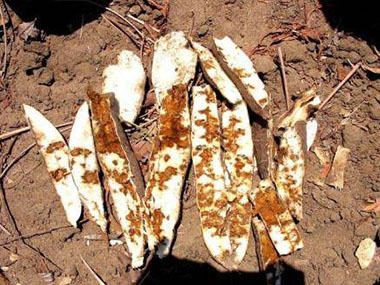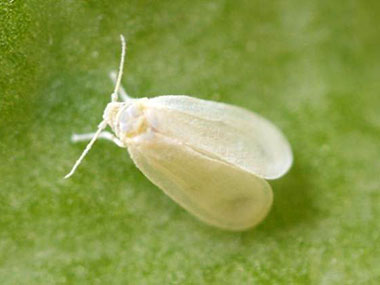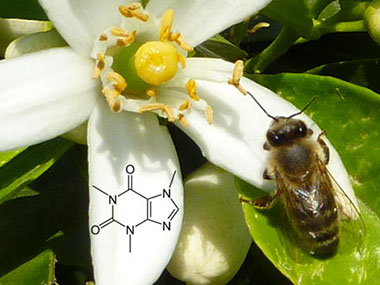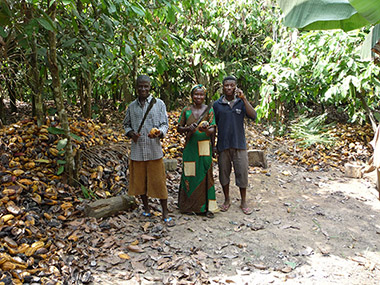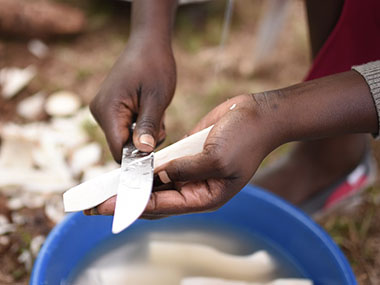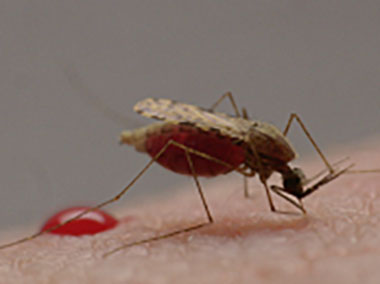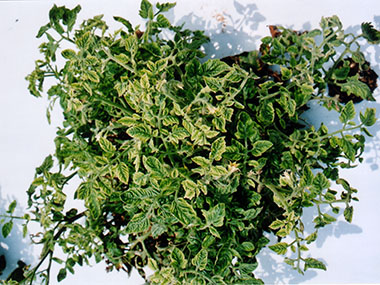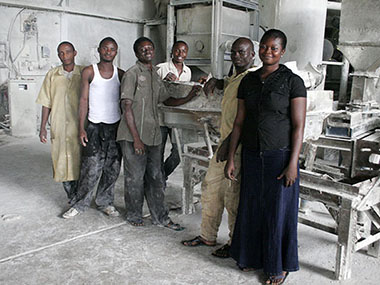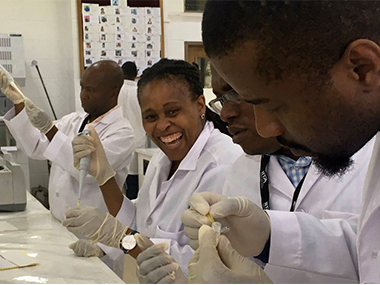Plant Health
The Plant Health Group’s research focusses on reducing yield losses caused by pests and diseases through application of integrated natural and social science approaches.
Fundamental research to understand complex plant-virus-vector interactions are focussed on providing critical components needed to generate impact through improved and sustainable control measures.
Molecular Virology and Entomology
We aim to develop and disseminate improved diagnostic tools to detect plant pests and pathogens and understand complex plant-virus-vector interactions that will identify sustainable control measures.
Plant Diseases and Vectors
We aim to provide concerted application of natural and social sciences to reduce the losses caused by pests and diseases.
The main objective of the Plant Diseases and Vectors group is to advance high-quality research on global, emerging or invasive agricultural pests and diseases that cause poverty and undermine the food security in developed and developing countries. We aim to utilise the knowledge and intellectual property (IP) gained from this research to develop novel environmentally sustainable solutions, which involve modelling, forecasting, and novel pest & disease management technologies. The development and promotion of integrated pest management (IPM) systems is at the core of the EC's approach to decreasing use of pesticides.
We underpin our work with plant science and microbiology research and aim to provide concerted application of natural and social sciences to reduce the losses caused by pests and diseases. This will improve food security through profitable farming which provides safe and healthy food, while sustaining biodiversity, protecting the environment and decreasing agriculture's carbon footprint. The Group's research activities are centred around:
- Basic research on plant science and microbes including agricultural pests and diseases and the interaction with their hosts
- Molecular biology of plant development, disease and pest organisms
- Development of diagnostic systems for pest and disease organisms
- Capacity-building in IPM and aspects of natural resource management
- Contributing to policy on pest management in agriculture and natural resource conservation
- Adaptive research on IPM component technologies
- Research and development on integrating IPM component technologies into practical and cost-effective pest management systems
- Research and development on alternatives to synthetic biocides in pest and disease management with particular expertise in:
- Insect viruses as biocontrol agents
- GM crops in IPM
- Exploring mechanisms of resistance to pests and diseases in host plants
- Social science research to support sustainable agriculture and enhanced ecosystem services.
- Tissue culture, chemo and thermos-therapies, and virus indexing (PCR and qPCR) technologies for generating virus-free planting material for better crop production
- Developing clean and better seed systems (eg. Sweet potato) by linking seed producers to research and growth markets
- Understanding the mechanisms of virus disease resistance and resistance gene mining using RNA-Sequencing technologies, particularly in cassava
- Exploring insect microbiome diversity by next generation sequencing technologies such as metagenome sequencing for understanding insect-bacterial infections, particularly in whiteflies.
- Dual-resistant cassava for climate resilience, economic development and increased food security of smallholders in eastern and southern Africa (DualCassava). Contact Professor Maruthi Gowda m.n.maruthi@gre.ac.uk
https://www.nri.org/latest/news/2018/making-cassava-doubly-resilient-nri-tackles-el-nino-and-cassava-diseases - Building Local Capacity for Surveillance Diagnosis, Characterisation and Control of Cassava Viruses in Northern Nigeria. Contact Professor Maruthi Gowda m.n.maruthi@gre.ac.uk
- Transcriptome analysis of virus-infected cassava and yeast-two-hybrid assays for resistance gene mining. Contact Professor Maruthi Gowda m.n.maruthi@gre.ac.uk
- African cassava whitefly project: outbreak causes and sustainable solutions. Contact Professor John Colvin J.Colvin@greenwich.ac.uk, http://cassavawhitefly.org/
- Understanding whitefly bacterial infections and exploring its microbiome diversity using metagenome sequencing
- Identifying resistance to the whitefly Bemisia tabaci in wild cassava accessions, Latin American genotypes and African land races
- Developing novel biopesticide formulation technology for major Lepidopteran crop pests. Contact David Grzywacz D.Grzywacz@greenwich.ac.uk
- Evolutionary biology: roles of novel membrane regulators of plants, microbes and organelles. Contact Elinor Thomposn e.thompson@greenwich.ac.uk
- Mr Sumesh Kakkunnath
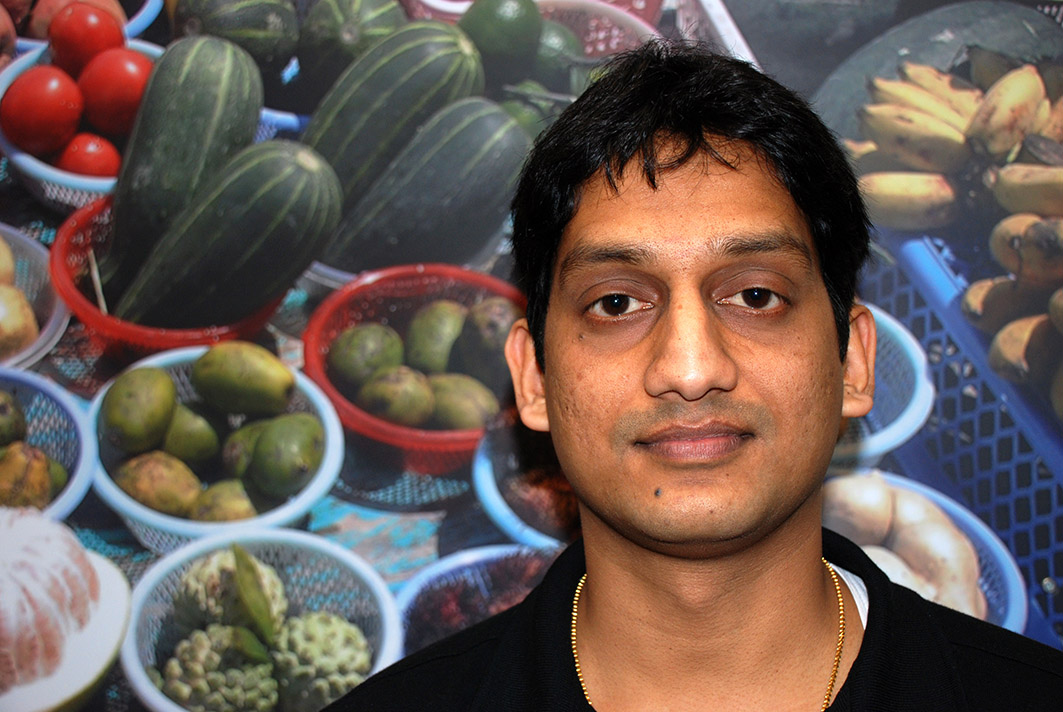 Sumesh is also from Kerala India. Aim of his PhD is to understand the mechanism of disease resistance in cassava for the Cassava brown streak virus. Sumesh will use yeast two hybrid system for identifying plant proteins interacting with the viral proteins, and in particular VPg and CP. His studies are funded by the University of Greenwich’s Vice Chancellor’s scholarship scheme for 2014–17. Sumesh has a Masters in Biotechnology from the University of Agricultural Sciences, Bengaluru India, and he’s an Associate Professor at the University of Agricultural Sciences, Dharawad India.
Sumesh is also from Kerala India. Aim of his PhD is to understand the mechanism of disease resistance in cassava for the Cassava brown streak virus. Sumesh will use yeast two hybrid system for identifying plant proteins interacting with the viral proteins, and in particular VPg and CP. His studies are funded by the University of Greenwich’s Vice Chancellor’s scholarship scheme for 2014–17. Sumesh has a Masters in Biotechnology from the University of Agricultural Sciences, Bengaluru India, and he’s an Associate Professor at the University of Agricultural Sciences, Dharawad India.
- Ms Jackie Atim
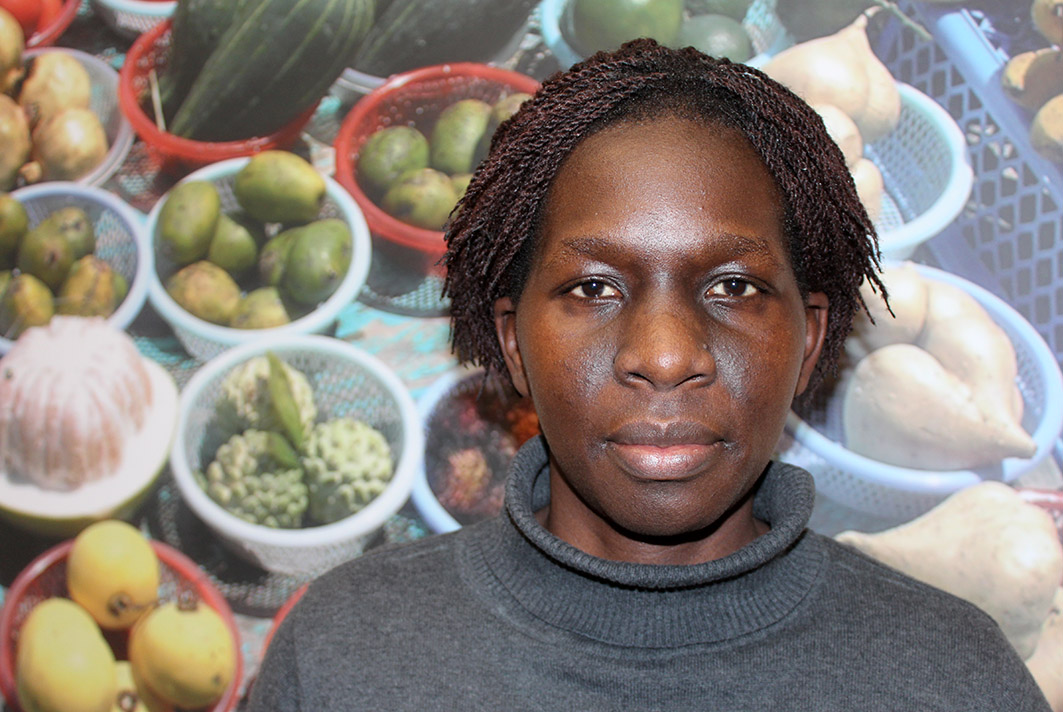 Jackie is also from Uganda joined ACWP in November 2015. Her PhD will be on identifying whitefly resistance in the local and introduced cassava germplasm from Uganda and Columbia, respectively. She will then try to identify whitefly resistance genes using next generation sequencing technologies. Jackie obtained a BVS in Agriculture with Education at Kyambogo University in Uganda, MSc in Plant Biotechnology (Molecular Plant Breeding and Pathology) at Wageningen University Netherlands. She also had one year training in developmental orientated Plant Biotechnology and Biosafety from Martin Luther University Halle Germany.
Jackie is also from Uganda joined ACWP in November 2015. Her PhD will be on identifying whitefly resistance in the local and introduced cassava germplasm from Uganda and Columbia, respectively. She will then try to identify whitefly resistance genes using next generation sequencing technologies. Jackie obtained a BVS in Agriculture with Education at Kyambogo University in Uganda, MSc in Plant Biotechnology (Molecular Plant Breeding and Pathology) at Wageningen University Netherlands. She also had one year training in developmental orientated Plant Biotechnology and Biosafety from Martin Luther University Halle Germany. - Ms Hajar El Hamss
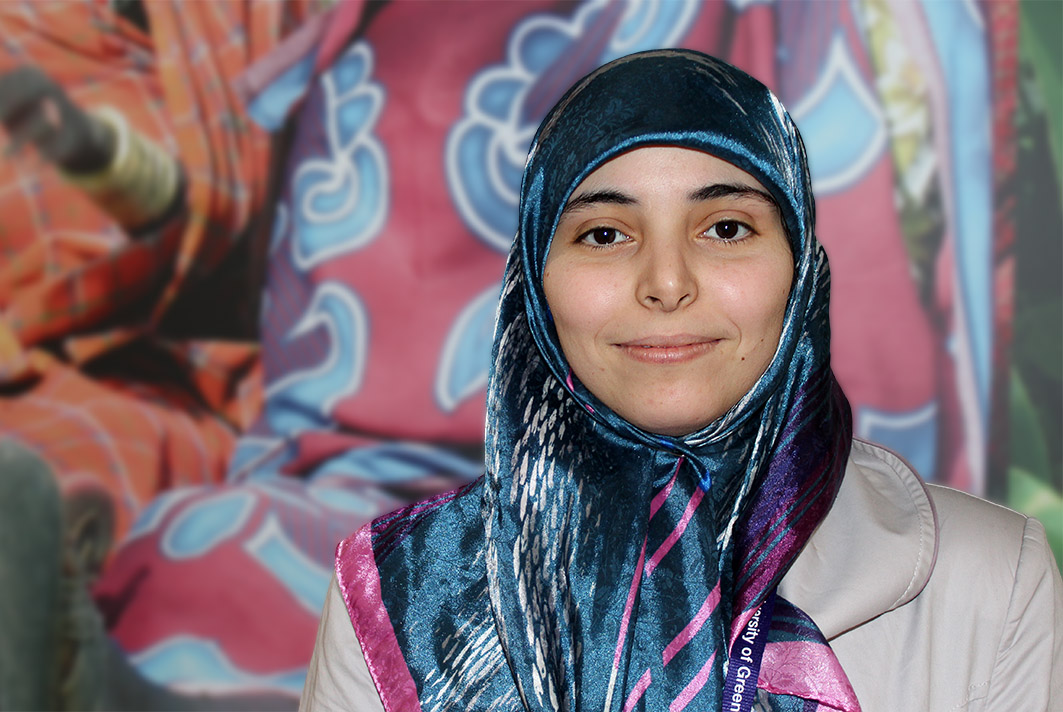 Hajar is from Morocco. She has a first master degree with honours in pest and disease management from ENAM (Ecole National d Agriculture de Meknes) Morocco. She completed a second MSc in Agriculture for sustainable development with distinction at NRI. She has also joined ACWP. Her PhD is on cassava whitefly endosymbionts which is expected to start in December 2015. Hajar will use a combination of insect bioassays and molecular tools to understand the role of endosymbionts on insect population development and the dynamics of cassava whitefly in African countries.
Hajar is from Morocco. She has a first master degree with honours in pest and disease management from ENAM (Ecole National d Agriculture de Meknes) Morocco. She completed a second MSc in Agriculture for sustainable development with distinction at NRI. She has also joined ACWP. Her PhD is on cassava whitefly endosymbionts which is expected to start in December 2015. Hajar will use a combination of insect bioassays and molecular tools to understand the role of endosymbionts on insect population development and the dynamics of cassava whitefly in African countries. - Ms Siji Philip Kavil
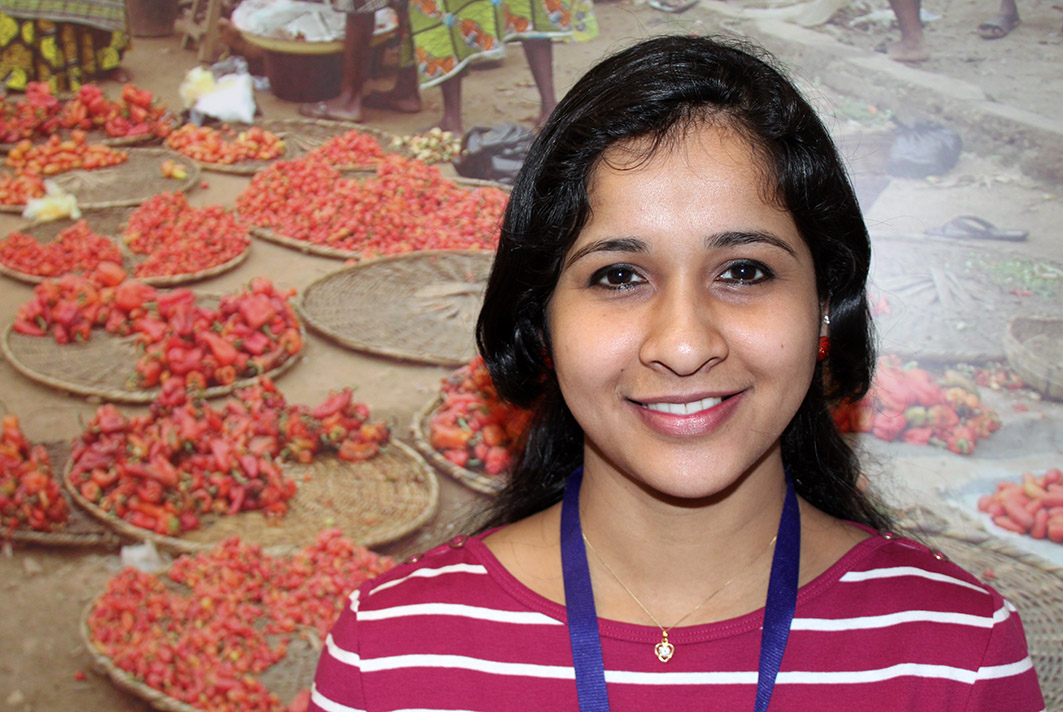 Siji is from Kerala, India. She is one of our VC scholarship students for 2015-16 and is expected to start before the end of the year. Her PhD will be on developing markers and validation of cassava genes conferring resistance to cassava brown streak virus. She has a BSc in Biotechnology from Bharathiar University Kerala, and MSc in Biotechnology from Bharathdasan University, Tamilnadu. Siji also has eight years of research experience in plant molecular biology at the University of Agricultural Sciences in Karnataka India.
Siji is from Kerala, India. She is one of our VC scholarship students for 2015-16 and is expected to start before the end of the year. Her PhD will be on developing markers and validation of cassava genes conferring resistance to cassava brown streak virus. She has a BSc in Biotechnology from Bharathiar University Kerala, and MSc in Biotechnology from Bharathdasan University, Tamilnadu. Siji also has eight years of research experience in plant molecular biology at the University of Agricultural Sciences in Karnataka India. - Ms Erica Ngwensang
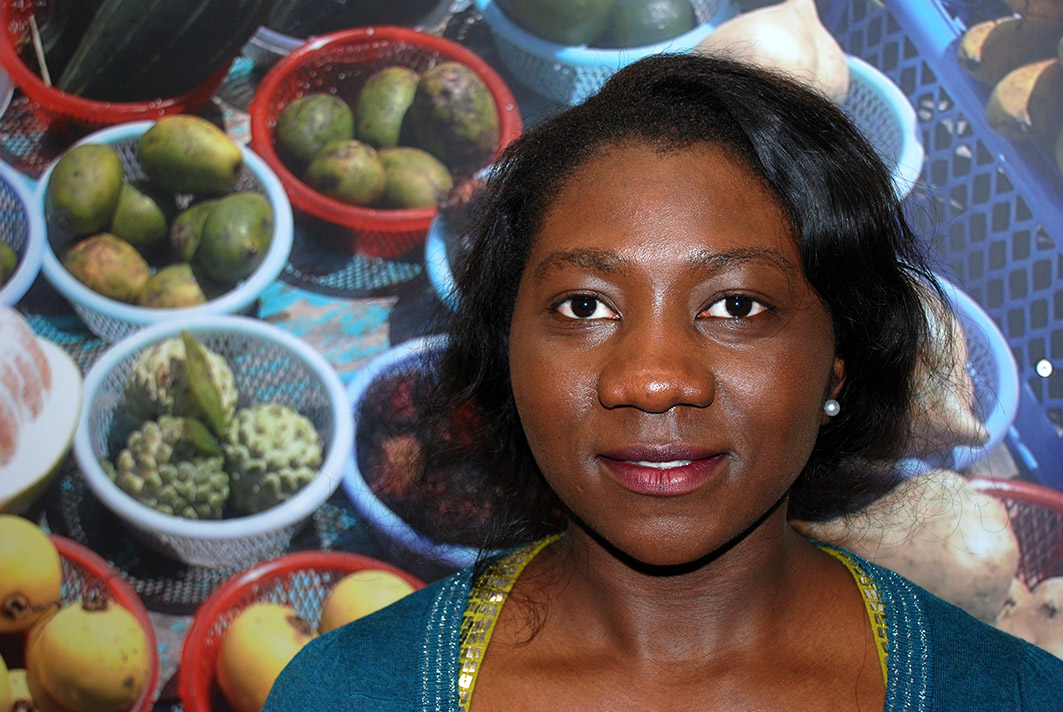 Erica is from Cameroon. She obtained an undergraduate degree in Environmental Sciences at University of Buea 2012. She then moved to Anglia Ruskin University, London in 2014 to undertake her postgraduate degree in International project management. Erica is now undertaking a PhD on the identification and characterisation of cassava genes conferring resistance to cassava mosaic virus.
Erica is from Cameroon. She obtained an undergraduate degree in Environmental Sciences at University of Buea 2012. She then moved to Anglia Ruskin University, London in 2014 to undertake her postgraduate degree in International project management. Erica is now undertaking a PhD on the identification and characterisation of cassava genes conferring resistance to cassava mosaic virus. - Mr Ahmad Hamza Balarabe
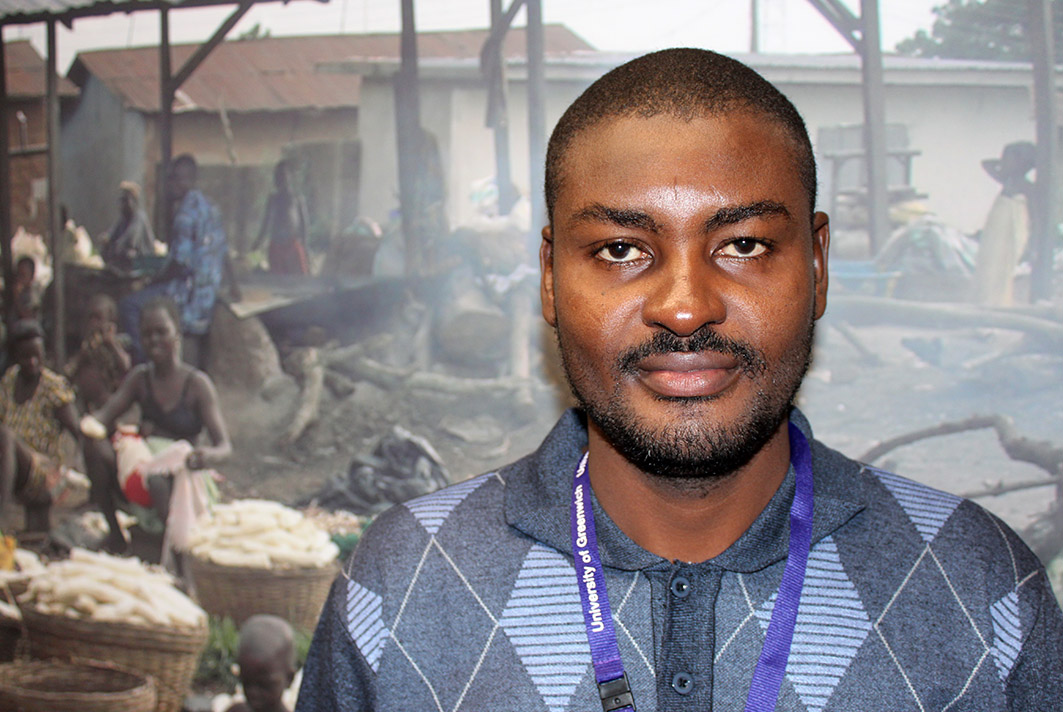 Ahmad is from Kebbi state northern Nigeria. He has obtained a Masters in Natural Resources from the University of Greenwich in 2008 and he has come back to do PhD on ‘Molecular characterization, surveillance and identifying sources of resistance to cassava mosaic viruses in Nigeria’. He’s conducting field research in Nigeria for 1.5 years on cassava virus disease surveys and epidemiology, and the remaining 1.5 years will be spent at NRI in the UK on virus diagnosis, diversity and resistance mechanisms.
Ahmad is from Kebbi state northern Nigeria. He has obtained a Masters in Natural Resources from the University of Greenwich in 2008 and he has come back to do PhD on ‘Molecular characterization, surveillance and identifying sources of resistance to cassava mosaic viruses in Nigeria’. He’s conducting field research in Nigeria for 1.5 years on cassava virus disease surveys and epidemiology, and the remaining 1.5 years will be spent at NRI in the UK on virus diagnosis, diversity and resistance mechanisms. - Ms Happyness Gabriel Mollel
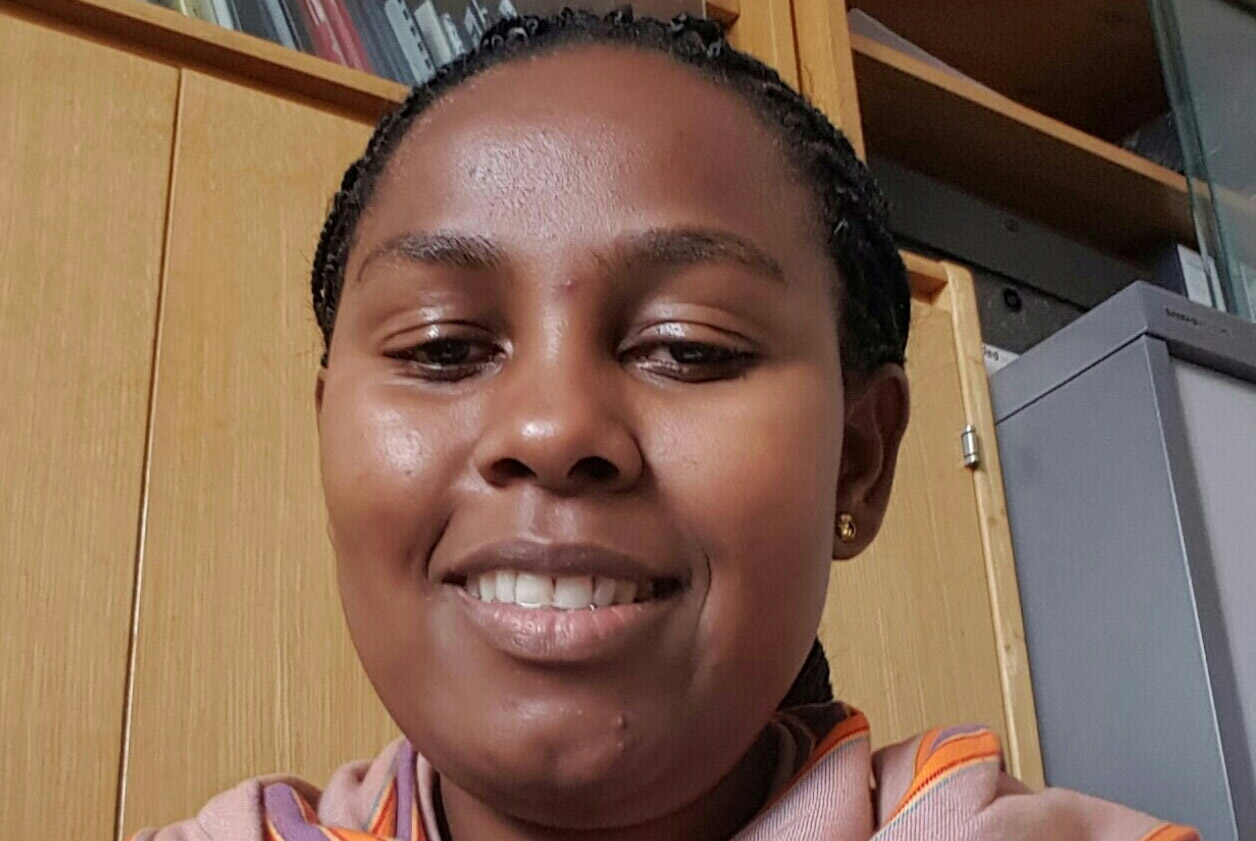 Happyness from Tanzania is a visiting PhD student in African Cassava whitefly Project (ACWP). She is registered at the University of Malaga (UMA), Spain from October, 2015 under the supervision of Dr Jesus Navas-Castillo. The main aim of her PhD studies is to determine biological species boundaries of the African cassava whitefly, B. tabaci and virus interaction, and also to understand the effect of viruses and host plant on whitefly biology. Part of her research work will be conducted at NRI, UK. Her studies will focus on reciprocal crossing experiment of Ipomea indica SSA2 from Spain and cassava whitefly, B. tabaci from East Africa. She has a MSc in Science (Molecular and Cell Biology) from the University of Witwatersrand, Johannesburg, South Africa, and BSc in Biotechnology and Laboratory Science from Sokoine University of Agriculture, Morogoro, Tanzania. Happyness has eight years of research experience in molecular plant virology at Mikocheni Agriculture Research Institute (MARI), Tanzania.
Happyness from Tanzania is a visiting PhD student in African Cassava whitefly Project (ACWP). She is registered at the University of Malaga (UMA), Spain from October, 2015 under the supervision of Dr Jesus Navas-Castillo. The main aim of her PhD studies is to determine biological species boundaries of the African cassava whitefly, B. tabaci and virus interaction, and also to understand the effect of viruses and host plant on whitefly biology. Part of her research work will be conducted at NRI, UK. Her studies will focus on reciprocal crossing experiment of Ipomea indica SSA2 from Spain and cassava whitefly, B. tabaci from East Africa. She has a MSc in Science (Molecular and Cell Biology) from the University of Witwatersrand, Johannesburg, South Africa, and BSc in Biotechnology and Laboratory Science from Sokoine University of Agriculture, Morogoro, Tanzania. Happyness has eight years of research experience in molecular plant virology at Mikocheni Agriculture Research Institute (MARI), Tanzania. - Mr Hastings Musopole
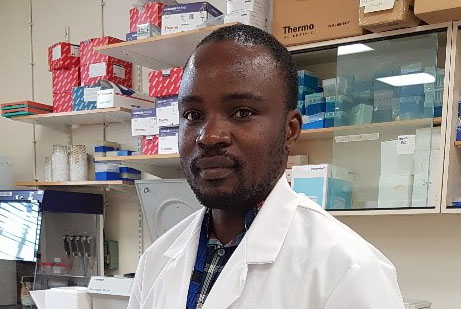 Hastings is from Malawi. He has obtained a Masters, from the University of Free State from South Africa, and joined NRI for PhD in 2018 in the project ‘DualCassava’. His PhD is titled ‘Socio-economic Impact of drought and cassava virus diseases in Malawi, and the identification of disease resistant cassava using molecular techniques’, is a combination of social and biological sciences to understand how farmers are coping with the dual effects of drought and diseases to their crop plants in Malawi. He spends about 2 years in Malawi carrying out field research and over 1 year in the UK carrying out lab-based molecular research.
Hastings is from Malawi. He has obtained a Masters, from the University of Free State from South Africa, and joined NRI for PhD in 2018 in the project ‘DualCassava’. His PhD is titled ‘Socio-economic Impact of drought and cassava virus diseases in Malawi, and the identification of disease resistant cassava using molecular techniques’, is a combination of social and biological sciences to understand how farmers are coping with the dual effects of drought and diseases to their crop plants in Malawi. He spends about 2 years in Malawi carrying out field research and over 1 year in the UK carrying out lab-based molecular research. - Mohamed Said
 Mohamed Said is a graduate from MSA College in Cairo, Egypt. His PhD is jointly conducted with the group of Professor Jeremy Everett, on the detoxification response of the model organism C. elegans. His work includes a collaboration with University College London researchers interested in organelle biology and lifespan.
Mohamed Said is a graduate from MSA College in Cairo, Egypt. His PhD is jointly conducted with the group of Professor Jeremy Everett, on the detoxification response of the model organism C. elegans. His work includes a collaboration with University College London researchers interested in organelle biology and lifespan.
- Dale Harrison
 Dale Harrison is a Greenwich biology graduate who worked in postharvest science locally. His PhD is a molecular biology study of novel regulators of plant carbon metabolism, stress and fertility. He works in the model plant Arabidopsis and the model chloroplast Synechocystis. His studies are funded by a University of Greenwich Vice Chancellor's Scholarship.
Dale Harrison is a Greenwich biology graduate who worked in postharvest science locally. His PhD is a molecular biology study of novel regulators of plant carbon metabolism, stress and fertility. He works in the model plant Arabidopsis and the model chloroplast Synechocystis. His studies are funded by a University of Greenwich Vice Chancellor's Scholarship.
- Arwa Selim
 Arwa Selim is a graduate from MSA College in Cairo, Egypt. Her PhD is centred on the biological roles of microbial membrane transporters including their potential for exploitation in biotechnology.
Arwa Selim is a graduate from MSA College in Cairo, Egypt. Her PhD is centred on the biological roles of microbial membrane transporters including their potential for exploitation in biotechnology.
- Ferrara BT, Thompson E, 2020. Multidrug and efflux transporters of the model microbe Dictyostelium discoideum. Access Microbiology 2 (in press).
- He M, Tang S, Cheke RA, 2020. A Holling type II discrete switching host-parasitoid system with a nonlinear threshold policy for integrated pest management. Discrete Dynamics in Nature and Society (in press).
- Nwezeobi J, Onyegbule O, Nkere C, Onyeka J, van Brunschot S, Seal S and Colvin J, 2020. Cassava whitefly species in eastern Nigeria and the threat of vector-borne pandemics from East and Central Africa. PLoS ONE, 15 (5):e0232616.
- Parry HR, Kalyebi A, Bianchi F, Sseruwagi P, Colvin J, Schellhorn N, Macfadyen S, 2020. Evaluation of cultural control and resistance‐breeding strategies for suppression of whitefly infestation of cassava at the landscape scale: a simulation modelling approach. Pest Management Science. ISSN 1526-498X (Print), 1526-4998.
- Wang HL, Lei T, Wang XW, Maruthi MN, Zhu DT, Cameron SL, Rao Q, Shan HW, Colvin J, Liu YQ, Liu SS, 2020. A newly recorded Rickettsia of the Torix group is a recent intruder and an endosymbiont in the whitefly Bemisia tabaci. Environmental Microbiology, 22:1207-1221.
- Cheke RA, Sidatt EHM, 2019. A review of alternatives to fenthion for quelea bird control. Crop Protection 116: 15-23.
- Hally HM, Hamss HE, Simiand C, Maruthi MN, Colvin J, Omongo CA, Delatte H, 2019. What has changed in the outbreaking populations of the severe crop pest whitefly species in cassava in two decades? Scientific Reports, 9:14796.
- Maruthi MN, Whitfield C, Otti G, Tumwegamire S, Kanju E, Legg JP, Mkamilo G, Kawuki R, Benesi I, Mhone A, Zacarias A, Munga T, Mwatuni F, Mbugua E, 2019, A method for generating virus-free cassava plants to combat viral disease epidemics in Africa. Physiological and Molecular Plant Pathology 105:77-87.
- Milledge JJ, Thompson EP, Sauvetre A, Schroeder P, Harvey P, 2019. Novel developments in biological technologies for wastewater processing. In: Galanakis, Charis M. and Agrafioti, Evita, (eds.) Sustainable Water and Wastewater Processing. Elsevier, pp. 239-278. ISBN 978-0128161708 (doi:https://doi.org/10.1016/B978-0-12-816170-8.00008-9)
- Tang S, Liang J, Xiang C, Xiao Y, Wang X, Wu J, Li G, Cheke RA, 2019. A general model of hormesis in biological systems and its application to pest management. Journal of the Royal Society Interface 20190468.
- Thompson E, Ferrara BT, 2019. A method for visualising fluorescence of polyphenolic therapeutics in vivo in the model eukaryote, Dictyostelium discoideum. BioTechniques, 66 (2). pp. 65-71.
- Thompson E, Rafiq M, 2019. The Dictyostelium rhomboid proteases and mitochondrial disease. Access Microbiology 1 (1A):452
- Tian Y, Tang S, Cheke RA, 2019. Dynamic complexity of a predator-prey model for IPM with nonlinear impulsive control incorporating a regulatory factor for predator releases. Mathematical Modelling and Analysis 24: 134-154. (https:/doi.org/10.3846/mma.2019.010).
- Vyskočilová S, Seal S, Colvin J, 2019. Relative polyphagy of “Mediterranean” cryptic Bemisia tabaci whitefly species and global pest status implications. Journal of Pest Science, 92 (3). pp. 1071-1088.
- Wang HL, Lei T, Xia W-Q, Cameron SL, Liu Y-Q, Zhang Z, Maruthi MN, De Barro P, Navas-Castillo J, Omongo CA, Delatte H, Lee K-Y, Patel MV, Krause-Sakate R, Ng J, Wu S-L, Fiallo-Olivé E, Liu S-S, Colvin J & Wang X-W, 2019. Insight into the microbial world of Bemisia tabaci cryptic species complex and its relationships with its host. Scientific Reports 9, Article number: 6568.
- Weinrich T, Hoh Kam J, Ferrara BT, Thompson EP, Mitrofanis J, Jeffery G, 2019. A day in the life of mitochondria reveals shifting workloads. Scientific Reports 9:13898.
- Cheke RA, 2018. New pests for old as GMOs bring on substitute pests. Proceedings of the National Academy of Sciences of the USA 115: 8239-8240.
- Ghosh S, Bouvaine S, Richardson SCW, Ghanim M, Maruthi MN, 2018. Fitness costs associated with infections of secondary endosymbionts in the cassava whitefly species Bemisia tabaci. Journal of Pest Science 91:17–28.
- Fennell J, Veys C, Dingle J, Nwezeobi J, van Brunschot S, Colvin J, Grieve B, 2018. A method for real-time classification of insect vectors of mosaic and brown streak disease in cassava plants for future implementation within a low-cost, handheld, in-field multispectral imaging sensor. Plant Methods, 14 (1). ISSN 1746-4811
- Liang, J., Tang, S. & Cheke, R.A. (2018) A discrete host-parasitoid model with evolution of pesticide resistance and IPM strategies. Journal of Biological Dynamics 12: 1059-1078.
- Macfadyen S, Paull C, Boykin LM, De Barro P, Maruthi MN, Ghosh S, Otim M, Kalyebi A, Vassão DG, Sseruwagi P, Tay WT, Delatte H, Seguni Z, Colvin J, Omongo CA, 2018. Cassava whitefly, Bemisia tabaci (Gennadius) (Hemiptera: Aleyrodidae), in sub-Saharan African farming landscapes: a review of the factors determining abundance. Bulletin of Entomological Research, 108 (5). pp. 65-582.
- Malka O, Santos-Garcia D, Feldmesser E, Sharon E, Krause-Sakate R, Delatte H, van Brunschot S, Patel M, Muhindira PV, Mugerwa H, Seal S, Colvin J, Morin S, 2018. Species-complex diversification and host-plant associations in Bemisia tabaci : a plant-defense, detoxification perspective revealed by RNAseq analyses. Molecular Ecology, 27 (21). pp. 4241-4256.
- Masinde EA, Mkamillo G, Ogendo JO, Hillocks R, Mulwa RMS, Kimata B, Maruthi MN, 2018. Genotype by environment interactions in identifying cassava (Manihot esculenta Crantz) resistant to cassava brown streak disease. Fields Crops Research 215: 39-48.
- Mugerwa H, Seal S, Wang HL, Patel MV, Kabaalu R, Omongo CA, Alicai T, Tairo F, Ndunguru J, Sseruwagi P, Colvin J, 2018. African ancestry of New World, Bemisia tabaci-whitefly species. Scientific Reports, 8 (1):2734.
- Tian Y, Tang S, Cheke RA, 2018, Nonlinear state-dependent feedback control of a pest-natural enemy system. Nonlinear Dynamics 94: 2243–2263.
- Vyskočilová S, Tay WT, van Brunschot S, Seal S, Colvin J, 2018. An integrative approach to discovering cryptic species within the Bemisia tabaci whitefly species complex. Scientific Reports, 8:10886.
- Maruthi MN, Jeremiah SC, Mohammed IU, Legg JP, 2017, The role of the whitefly, Bemisia tabaci (Gennadius), and farmer practices in the spread of cassava brown streak ipomoviruses. Journal of Phytopathology 165:707–717.
- Xiang C, Tang S, Cheke RA, Qin W, 2016. A locust phase change model with multiple switching states and random perturbation. International Journal of Bifurcation and Chaos 26: 1630037.
The Molecular Virology and Entomology Research group undertakes strategic and applied research for controlling pests and diseases of tropical food crops especially those caused by viruses and insect vectors on cassava, sweet potato, yams and vegetables in many African and Asian countries. We develop and disseminate improved diagnostic tools for the rapid and efficient detection of plant pests and pathogens, understand complex plant-virus-vector interactions that will allow answering important epidemiological questions and undertake research to identify sustainable control measures. In our research, we employ both traditional and advanced technologies including identifying transgenic sources of resistance to crop pests, and discovering novel targets for virus and insect control by comparative genomics and transcriptomics. The current focus of our research includes:
- Research to generate an improved understanding of the factors contributing to the spread of cassava, yam and sweet potato virus disease epidemics in Africa and their control.
- Developing robust, low-cost laboratory and field diagnostic technologies for plant viruses and their vectors, focussing on root and tuber crop viruses (cassava, sweet potato and yam).
- Gaining insights into virus-host-vector interactions involving cassava mosaic viruses (Family Geminiviridae) and cassava brown streak viruses (Family Potyviridae) with their host cassava and common insect vector, Bemisia tabaci.
In support of our research activities, the Group is proactive in building public and private partnerships to promote the practical application of biotechnologies in Sub-Saharan Africa and their potential contribution to food security and sustainable agricultural production.
- Using High-Throughput Sequencing indexing to strengthen the yam (Dioscorea spp.) seed systems in Sub-Saharan Africa (2019-2022, Royal Society International Collaboration Award)
- Enabling Research Tools for Cassava and Yam Virologists and Breeders (Phase II, 2016-2021, Bill & Melinda Gates Foundation - BMGF funded)
- Development of on-farm robust diagnostic toolkits for yam virus diseases (2012-2018, BMGF-funded)
- African cassava whitefly: outbreak causes and sustainable solutions (2014-2018, BMGF-funded)
- CONNECTED: COmmunity Network for africaN vECTor borne plant viruses (led by Prof. Gary Foster, University of Bristol, Global Challenges Research Fund- GCRF funded)
- PEARL II: Improving Our Understanding and Response to Yam Badnaviruses Impacting Yam Growers in Northern Nigeria (2016-2019, led by Dr Aliyu Turaki, Kebbi State, Nigeria, BMGF-funded)
- Bio-ecology of and Host Plant Resistance to Bean Leaf Beetles: A Step Towards Sustainable Management in Uganda (2016-2019, led by Dr Michael Otim, National Crops Resources Research Institute, Uganda, BMGF-funded)
Current PhD students:
- Ruth O. Festus: Development and evaluation of novel diagnostic tools for African yam viruses
- Katherine Connor: Diversity and evolution of plant DNA viruses: implications of climate change for disease management
- Juan Paolo Sicat: Evolution of invasiveness of whiteflies belonging to the Bemisia tabaci species complex.
- Steven Sewe: Next Generation Sequencing (NGS) characterization of plant viral diversity and host interactions in West African yam (Dioscorea spp.)
- Phillip Abidrabo
Previous PhD students:
- Tadeo Kaweesi: Identification of new gene targets for control of cassava whitefly (Bemisia tabaci)
- Ajith Rathnayake: Establishing the link between plant stress signalling and activatable endogenous pararetroviruses
- Annet Namuddu: Identification of essential detoxification genes in African cassava whitefly populations as potential targets for silencing and effective pest control
- Joachim Nwezeobi: Transcriptomic and genomic analysis of the West African cassava whitefly populations
- Sona Vyskocilova: Gene flow between Bemisia tabaci Mediterranean (MED) populations and their host-plant preferences
- Medhavi Ranatunga: Immunological response to Leishmania infection of human cell
- Habibu Mugerwa (2018) Diversity, molecular characterisation and diagnostic tests to assist the development of effective whitefly, Bemisia tabaci, control in sub-Saharan Africa
- Nikunj Naik (2018) Computational characterization of gene families in the whitefly Bemisia tabaci
- Mitul Patel (2016) Assembly and annotation of the transcriptome and genome of the whitefly, Bemisia tabaci, generated using next generation sequencing technologies
- Springate S (2015) The cabbage whitefly, Aleyrodes proletella: outbreaks and potential solutions.
- Aliyu Turaki (2014) Are endogenous pararetrovirus sequences in yam genomes activatable and responsible for widespread badnavirus infections in West African yams?
- Nawres Sadeq (2013) Molecular characterisation of plant viruses infecting potato and vegetables in Iraq.
- M.M. Abarshi (2012) Biodiversity and pathogenicity of viruses causing cassava brown streak disease.
- Chowda Reddy RV (2004) Molecular characterisation of tomato leaf curl viruses and Bemisia tabaci.
- Herselman L (2003) Genetic linkage map development and identification of molecular markers linked to groundnut rosette disease aphid resistance in groundnut.
- Alicai T. (2003) Cassava mosaic resistant cassava: selective effects on cassava mosaic begomoviruses and reversion and recovery from cassava mosaic disease.
- Omongo CA. (2003) Bemisia tabaci, behaviour and ecology in relation to the spread of the cassava mosaic epidemic in Uganda.
- Lebas BSM (2002) Diversity of viruses infecting Dioscorea species in the South Pacific
- Nakyanzi M (2002) Molecular and pathogenic diversity of isolates of Mycosphaerella fijiensis from E.Africa
- Maruthi MN. (2001) Bemisia tabaci and geminivirus variability in relation to cassava mosaic disease.
- Abubakar Z. (2000) Development of diagnostic techniques for bacterial pathogens of crop plants in Tanzania.
- Thwaites RM (1999) Molecular studies on pathogenicity genes of vascular bacterial pathogens of Musa spp.
- Henríquez N P (1997). Diagnostic techniques for discrimination between the components of the corn stunt complex in Mexico and Central America.
- Jayaratne D L (1996) Detection and differentiation of potyviruses affecting yam.
- Nkere C.K., Otto E., Atiri G.I., Onyeka J., Silva G., Bömer M., Seal S.E and Kumar, P.L. (2020) Assessment of Yam mild mosaic virus coat protein gene sequence diversity reveals the prevalence of cosmopolitan and African group of isolates in Ghana and Nigeria. Current Plant Biology. https://doi.org/10.1016/j.cpb.2020.100156
- Silva G., Bömer M., Rathnayake A.I., Sewe S.O., Visendi P., Oyekanmi J.O., Quain M.D., Akomeah B., Kumar P.L. & Seal S.E. (2019) Molecular Characterization of a New Virus Species Identified in Yam (Dioscorea spp.) by High-Throughput Sequencing. Plants 8, 167. https://doi.org/10.3390/plants8060167
- Malka, O., Santos‐Garcia, D., Feldmesser, E., Sharon, E., Krause‐Sakate, R., Delatte, H., van Brunschot, S., Patel, M., Visendi Muhindira, P., Mugerwa, H., Seal, S., Colvin, J. and Morin, S. (2018) Species‐complex diversification and host‐plant associations in Bemisia tabaci: a plant‐defense, detoxification perspective revealed by RNAseq analyses. Molecular Ecology. Accepted Author Manuscript. (doi:10.1111/mec.14865)
- Silva, G. , Lecourt, J., Clover, G.R.G. and Seal, S.E. (2018) First record of Grapevine Pinot gris virus infecting Vitis vinifera in the United Kingdom. New Disease Reports, 38 (7). ISSN 2044-0588 (Online) (doi:10.5197/j.2044-0588.2018.038.007)
- The International Wheat Genome Sequencing Consortium (IWGSC) (including Visendi P.) (2018) Shifting the limits in wheat research and breeding using a fully annotated reference genome. Science 361, 6403. (https://doi.org/10.1126/science.aar7191)
- Vyskočilová S., Tay W.T., van Brunschot S., Seal S. and Colvin J. (2018) An integrative approach to discovering cryptic species within the Bemisia tabaci whitefly species complex. Scientific Reports 8: 10886. (https://www.nature.com/articles/s41598-018-29305-w)
- Bömer, Moritz , O’Brien, José A., Pérez-Salamó, Imma, Krasauskas, Jovaras, Finch, Paul, Briones, Andrea, Daudi, Arsalan, Souda, Puneet, Tsui, Tjir-Li, Whitelegge, Julian P., Bolwell, G. Paul and Devoto, Alessandra (2018) COI1-dependent jasmonate signalling affects growth, metabolites production and cell wall protein composition in Arabidopsis. Annals of Botany. pp. 1-13. ISSN 0305-7364 (Print), 1095-8290 (Online) (In Press) (doi:10.1093/aob/mcy109)
- Bömer, Moritz , Rathnayake, Ajith I., Visendi, Paul, Sewe, Steven O., Sicat, Juan Paolo A., Silva, Gonçalo , Kumar, P. Lava and Seal, Susan E. (2018) Tissue culture and next-generation sequencing: A combined approach for detecting yam (Dioscorea spp.) viruses. Physiological and Molecular Plant Pathology. ISSN 0885-5765 (Print), 1096-1178 (Online) (In Press) (doi:10.1016/j.pmpp.2018.06.003)
- Mugerwa, Habibu, Seal, Susan , Wang, Hua-Ling, Patel, Mitulkumar V., Kabaalu, Richard, Omongo, Christopher A., Alicai, Titus, Tairo, Fred, Ndunguru, Joseph, Sseruwagi, Peter and Colvin, John (2018) African ancestry of New World, Bemisia tabaci-whitefly species. Scientific Reports, 8 (1):2734. ISSN 2045-2322 (Print), 2045-2322 (Online) (doi:10.1038/s41598-018-20956-3)
- Boykin, Laura M., Kinene, Tonny, Wainaina, James M., Savill, Anders, Seal, Susan , Mugerwa, Habibu, Macfadyen, Sarina, Tay, Wee Tek, De Barro, Paul, Kubatko, Laura, Alicai, Titus, Omongo, Christopher A., Tairo, Fred, Ndunguru, Joseph and Sseruwagi, Peter (2018) Review and guide to a future naming system of African Bemisia tabaci species. Systematic Entomology, 43 (3). pp. 427-433. ISSN 0307-6970 (Print), 1365-3113 (Online) (doi:10.1111/syen.12294)
- Krupovic, Mart, Blomberg, Jonas, Coffin, John M., Dasgupta, Indranil, Fan, Hung, Geering, Andrew D., Gifford, Robert, Harrach, Balázs, Hull, Roger, Johnson, Welkin, Kreuze, Jan F., Lindemann, Dirk, Llorens, Carlos, Lockhart, Ben, Mayer, Jens, Muller, Emmanuelle, Olszewski, Neil, Pappu, Hanu R., Pooggin, Mikhail, Richert-Pöggeler, Katja R., Sabanadzovic, Sead, Sanfaçon, Hélène, Schoelz, James E., Seal, Susan , Stavolone, Livia, Stoye, Jonathan P., Teycheney, Pierre-Yves, Tristem, Michael, Koonin, Eugene V. and Kuhn, Jens H. (2018) Ortervirales: A new viral order unifying five families of reverse-transcribing viruses. Journal of Virology, 92 (12). 00515-00518. ISSN 0022-538X (Print), 1098-5514 (Online) (doi:10.1128/JVI.00515-18)
- Brewer, Helen C., Hird, Diane L., Bailey, Andy M., Seal, Susan E. and Foster, Gary D. (2018) A guide to the contained use of plant virus infectious clones. Plant Biotechnology Journal, 16 (4). pp. 832-843. ISSN 1467-7644 (Print), 1467-7652 (Online) (doi:10.1111/pbi.12876)
- Nkere, Chukwuemeka K., Oyekanmi, Joshua O., Silva, Gonçalo , Bömer, Moritz , Atiri, Gabriel I., Onyeka, Joseph, Maroya, Norbert G., Seal, Susan E. and Kumar, P. Lava (2018) Chromogenic detection of yam mosaic virus by closed-tube reverse transcription loop-mediated isothermal amplification (CT-RT-LAMP). Archives of Virology. ISSN 0304-8608 (Print), 1432-8798 (Online) (doi:10.1007/s00705-018-3706-0)
- Bömer, Moritz , Turaki, Aliyu, Rathnayake, Ajith, Silva, Goncalo , Lava Kumar, P. and Seal, Susan (2018) Rolling circle amplification to screen yam germplasm for badnavirus infections and to amplify and characterise novel badnavirus genomes. Bio-protocol, 8 (1). ISSN 2331-8325 (Online) (doi:10.21769/BioProtoc.2672)
- Tulpová, Zuzana, Luo, Ming-Cheng, Toegelová, Helena, Visendi, Paul, Hayashi, Satomi, Vojta, Petr, Paux, Etienne, Kilian, Andrzej, Abrouk, Michaël, Bartoš, Jan, Hajdúch, Marián, Batley, Jacqueline, Edwards, David, Doležel, Jaroslav and Šimková, Hana (2018) Integrated physical map of bread wheat chromosome arm 7DS to facilitate gene cloning and comparative studies. New Biotechnology. ISSN 1871-6784 (Print), 1876-4347 (Online) (In Press) (doi:10.1016/j.nbt.2018.03.003)
- Silva, Gonçalo , Oyekanmi, Joshua, Nkere, Chukwuemeka K., Bömer, Moritz , Kumar, Lava P. and Seal, Susan (2018) Rapid detection of potyviruses from crude plant extracts. Analytical Biochemistry, 546. pp. 17-22. ISSN 0003-2697 (Print), 1096-0309 (Online) (doi:10.1016/j.ab.2018.01.019)
- Kuhn, J. H., Krupovic, M., Harrach, B., Sabanadzovic, S., Sanfaçon, H., Koonin, E. V., … (including Seal S.) and Stavolone, L. (2017). Creation of new order, Ortervirales, for 5 families of reverse-transcribing viruses. (doi:10.13140/RG.2.2.24914.04804)
- Montenegro, Juan D., Golicz, Agnieszka A., Bayer, Philipp E., Hurgobin, Bhavna, Lee, HueyTyng, Chan, Chon-Kit Kenneth, Muhindira, Paul, Lai, Kaitao, Doležel, Jaroslav, Batley, Jacqueline and Edwards, David (2017) The pangenome of hexaploid bread wheat. The Plant Journal, 90 (5). pp. 1007-1013. ISSN 0960-7412 (doi:10.1111/tpj.13515)
- Tomlinson, Katie R., Bailey, Andy M., Alicai, Titus, Seal, Sue and Foster, Gary D. (2017) Cassava brown streak disease: historical timeline, current knowledge and future prospects. Molecular Plant Pathology. ISSN 1464-6722 (Print), 1364-3703 (Online) (doi:10.1111/mpp.12613)
- Bömer, Moritz , Rathnayake, Ajith I., Visendi, Paul, Silva, Gonçalo and Seal, Susan E. (2017) Complete genome sequence of a new member of the genus Badnavirus, Dioscorea bacilliform RT virus 3, reveals the first evidence of recombination in yam badnaviruses. Archives of Virology. ISSN 0304-8608 (Print), 1432-8798 (Online) (doi:10.1007/s00705-017-3605-9)
- Silva, G. , Lecourt, J., Clover, G.R.G. and Seal, S. E. (2017) First report of Grapevine fanleaf virus infecting grapevine in the United Kingdom. New Disease Reports, 36 (9). ISSN 2044-0588 (Online) (doi:10.5197/j.2044-0588.2017.036.009)
- Turaki, Aliyu A., Bömer, Moritz , Silva, Gonçalo , Kumar, P. Lava and Seal, Susan E. (2017) PCR-DGGE analysis: Unravelling complex mixtures of badnavirus sequences present in yam germplasm. Viruses, 9 (7). p. 181. ISSN 1999-4915 (Print), 1999-4915 (Online) (doi:10.3390/v9070181)
- Bömer, Moritz , Turaki, Aliyu A., Silva, Gonçalo , Kumar, P. Lava and Seal, Susan E. (2016) A sequence-independent strategy for amplification and characterisation of episomal badnavirus sequences reveals three previously uncharacterised yam badnaviruses. Viruses, 8:188. pp. 1-22. ISSN 1999-4915 (Print), 1999-4915 (Online) (doi:10.3390/v8070188)
- Staňková, Helena, Hastie, Alex R., Chan, Saki, Vrána, Jan, Tulpová, Zuzana, Kubaláková, Marie, Visendi, Paul, Hayashi, Satomi, Luo, Mingcheng, Batley, Jacqueline, Edwards, David, Doležel, Jaroslav and Šimková, Hana (2016) BioNano genome mapping of individual chromosomes supports physical mapping and sequence assembly in complex plant genomes. Plant Biotechnology Journal, 14 (7). pp. 1523-1531. ISSN 1467-7644 (Print), 1467-7652 (Online) (doi:10.1111/pbi.12513)
- Martins, Mónica, Assunção, Ana, Neto, André, Silva, Gonçalo , Sghaier, Haïtham and Costa, Maria Clara (2016) Performance and bacterial community shifts during phosphogypsum biotransformation. Water, Air, & Soil Pollution, 227 (12):437. pp. 1-10. ISSN 0049-6979 (Print), 1573-2932 (Online) (doi:10.1007/s11270-016-3129-z)
- Visendi, Paul, Berkman, Paul J., Hayashi, Satomi, Golicz, Agnieszka A., Bayer, Philipp E., Ruperao, Pradeep, Hurgobin, Bhavna, Montenegro, Juan, Chan, Chon-Kit Kenneth, Staňková, Helena, Batley, Jacqueline, Šimková, Hana, Doležel, Jaroslav and Edwards, David (2016) An efficient approach to BAC based assembly of complex genomes. Plant Methods, 12 (2). pp. 1-9. ISSN 1746-4811 (Print), 1746-4811 (Online) (doi:10.1186/s13007-016-0107-9)
- Al-Kuwaiti, N.A., Maruthi, M.N. and Seal, S.E. (2016) Molecular characterization of potyviruses infecting potato and vegetables in Iraq. Journal of Plant Pathology: An International Journal of the Italian Phytopathological Society, 98 (3). ISSN 1125-4653 (doi:/10.4454/JPP.V98I3.029)
- Silva, Gonçalo , Bömer, Moritz , Nkere, Chukwuemeka, Kumar, P. Lava and Seal, Susan E. (2015) Rapid and specific detection of Yam mosaic virus by reverse-transcription recombinase polymerase amplification. Journal of Virological Methods, 222. pp. 138-144. ISSN 0166-0934 (doi:10.1016/j.jviromet.2015.06.011)
- Gou, Lulu, Hattori, Jiro, Fedak, George, Balcerzak, Margaret, Sharpe, Andrew, Visendi, Paul, Edwards, David, Tinker, Nicholas, Wei, Yu-Ming, Chen, Guo-Yue and Ouellet, Thérèse (2015) Development and validation of –expressed molecular markers specific for the long arm of Chromosome 7E. Crop Science, 56 (1). pp. 354-363. ISSN 0011-183X (Print), 1435-0653 (Online) (doi:10.2135/cropsci2015.03.0184)
- Lai, Kaitao, Lorenc, Michał T., Lee, Hong Ching, Berkman, Paul J., Bayer, Philipp Emanuel, Visendi, Paul, Ruperao, Pradeep, Fitzgerald, Timothy L., Zander, Manuel, Chan, Chon-Kit Kenneth, Manoli, Sahana, Stiller, Jiri, Batley, Jacqueline and Edwards, David (2015) Identification and characterization of more than 4 million intervarietal SNPs across the group 7 chromosomes of bread wheat. Plant Biotechnology Journal, 13 (1). pp. 97-104. ISSN 1467-7644 (Print), 1467-7652 (Online) (doi:10.1111/pbi.12240)
- Bayer, Philipp E., Ruperao, Pradeep, Mason, Annaliese S., Stiller, Jiri, Chan, Chon-Kit Kenneth, Hayashi, Satomi, Long, Yan, Meng, Jinling, Sutton, Tim, Visendi, Paul, Varshney, Rajeev K., Batley, Jacqueline and Edwards, David (2015) High-resolution skim genotyping by sequencing reveals the distribution of crossovers and gene conversions in Cicer arietinum and Brassica napus. Theoretical and Applied Genetics, 128 (6). pp. 1039-1047. ISSN 0040-5752 (Print), 1432-2242 (Online) (doi:10.1007/s00122-015-2488-y)
- Umber, Marie, Filloux, Denis, Muller, Emmanuelle, Laboureau, Nathalie, Galzi, Serge, Roumagnac, Philippe, Iskra-Caruana, Marie-Line, Pavis, Claudie, Teycheney, Pierre-Yves and Seal, Susan E. (2014) The genome of African yam (Dioscorea cayenensis-rotundatacomplex) hosts endogenous sequences from four distinct badnavirus species. Molecular Plant Pathology, 15 (8). pp. 790-801. ISSN 1464-6722 (Print), 1364-3703 (Online) (doi:10.1111/mpp.12137)
- Seal, Susan , Turaki, Aliyu, Muller, Emmanuelle, Kumar, P. Lava, Kenyon, Lawrence, Filloux, Denis, Galzi, Serge, Lopez-Montes, Antonio and Iskra-Caruana, Marie-Line (2014) The prevalence of badnaviruses in West African yams (Dioscorea cayenensis-rotundata) and evidence of endogenous pararetrovirus sequences in their genomes. Virus Research, 186. pp. 144-154. ISSN 0168-1702 (Print), 1872-7492 (Online) (doi:10.1016/j.virusres.2014.01.007)
- Golicz, Agnieszka A., Martinez, Paula A., Zander, Manuel, Patel, Dhwani A., Van De Wouw, Angela P., Visendi, Paul, Fitzgerald, Timothy L., Edwards, David and Batley, Jacqueline (2014) Gene loss in the fungal canola pathogen Leptosphaeria maculans. Functional & Integrative Genomics, 15 (2). pp. 189-196. ISSN 1438-793X (Print), 1438-7948 (Online) (doi:10.1007/s10142-014-0412-1)
- Ruperao, Pradeep, Chan, Chon-Kit Kenneth, Azam, Sarwar, Karafiátová, Miroslava, Hayashi, Satomi, Čížková, Jana, Saxena, Rachit K., Šimková, Hana, Song, Chi, Vrána, Jan, Chitikineni, Annapurna, Visendi, Paul, Gaur, Pooran M., Millán, Teresa, Singh, Karam B., Taran, Bunyamin, Wang, Jun, Batley, Jacqueline, Doležel, Jaroslav, Varshney, Rajeev K. and Edwards, David (2014) A chromosomal genomics approach to assess and validate the desi and kabuli draft chickpea genome assemblies. Plant Biotechnology Journal, 12 (6). pp. 778-786. ISSN 1467-7644 (Print), 1467-7652 (Online) (doi:10.1111/pbi.12182)
- Collins, Carl, Patel, Mitulkumar V., Colvin, John, Bailey, David and Seal, Susan (2014) Identification and evaluation of suitable reference genes for gene expression studies in the whitefly Bemisia tabaci (Asia I) by reverse transcription quantitative realtime PCR. Journal of Insect Science, 14 (1):63. pp. 1-25. ISSN 1536-2442 (doi:10.1673/031.014.63)
- Al-Kuwaiti, N., Otto, B., Collins, C., Seal, S. and Maruthi, M. (2013) Molecular characterisation and first complete genome sequence of Tomato yellow leaf curl virus (TYLCV) infecting tomato in Iraq. New Disease Reports, 27:17. ISSN 2044-0588 (doi:10.5197/j.2044-0588.2013.027.017)
- Seal, Susan , Patel, Mitulkumar V., Collins, Carl, Colvin, John and Bailey, David (2012) Next generation transcriptome sequencing and quantitative real-time PCR technologies for characterisation of the Bemisia tabaci Asia 1 mtCOI phylogenetic clade. Journal of Integrative Agriculture, 11 (2). pp. 281-292. ISSN 2095-3119 (doi:10.1016/S2095-3119(12)60012-4)
- Clark, Christopher A., Davis, Jeffrey A., Abad, Jorge A., Cuellar, Wilmer J., Fuentes, Segundo, Kreuze, Jan F., Gibson, Richard, Mukasa, Settumba B., Tugume, Arthur K., Tairo, Fred Donati and Valkonen, Jari P.T. (2012) Sweetpotato viruses: 15 years of progress on understanding and managing complex diseases. Plant Disease, 96 (2). pp. 168-185. ISSN 0191-2917 (doi:10.1094/PDIS-07-11-0550)
- Chowda-Reddy, R.V., Kirankumar, M., Seal, Susan E. , Muniyappa, V., Valand, Girish B., Govindappa, M.R. and Colvin, John (2012) Bemisia tabaci phylogenetic groups in India and the relative transmission efficacy of Tomato leaf curl Bangalore virus by an indigenous and an exotic population. Journal of Integrative Agriculture, 11 (2). pp. 235-248. ISSN 2095-3119 (doi:10.1016/S2095-3119(12)60008-2)
- Pallavi, M.S., Ramappa, H.K., Shankarappa, K.S., Rangaswamy, K.T., Wickramaarachchi, W.A.R.T. and Maruthi, M.N. (2012) Detection and molecular characterization of phytoplasma associated with chickpea phyllody disease in south India. Phytoparasitic, 40 (3). pp. 279-286. ISSN 0334-2123 (Print), 1876-7184 (Online) (doi:10.1007/s12600-012-0221-9)
- Colvin, John, Nagaraju, N., Moreno Leguizamon, Carlos, Govindappa, R.M., Manjunatha Reddy, T.B., Padmaja, S.A., Joshi, Neena, Hanson, Peter M., Seal, Susan E. and Muniyappa, V. (2012) Socio-economic and scientific impact created by whitefly-transmitted, plant- virus disease resistant tomato varieties in Southern India. Journal of Integrative Agriculture, 11 (2). pp. 337-345. ISSN 2095-3119
- Mohammed, I.U., Abarshi, M.M., Muli, B., Hillocks, R.J. and Maruthi, M.N. (2012) The symptom and genetic diversity of cassava brown streak viruses infecting cassava in East Africa. Advances in Virology, 2012. ISSN 1687-8639 (Print), 1687-8647 (Online) (doi:10.1155/2012/795697)
- Abarshi, M.M., Mohammed, I.U., Jeremiah, S.C., Legg, J.P., Kumar, P. Lava, Hillocks, R.J. and Maruthi, M.N. (2011) Multiplex RT-PCR assays for the simultaneous detection of both RNA and DNA viruses infecting cassava and the common occurrence of mixed infections by two cassava brown streak viruses in East Africa. Journal of Virological Methods, 179 (1). pp. 176-184. ISSN 0166-0934 (doi:10.1016/j.jviromet.2011.10.020)
- Black, Robert, Fava, Fabio, Mattei, Niccolo, Seal, Susan and Verdier, Valerie (2011) Case studies on the use of biotechnologies and on biosafety provisions in four African countries. Journal of Biotechnology, 156 (4). pp. 370-381. ISSN 0168-1656 (doi:10.1016/j.jbiotec.2011.06.036)
- Wasswa, P., Otto, B., Maruthi, M.N., Mukasa, S.B., Monger, W. and Gibson, R.W. (2011) First identification of a sweet potato begomovirus (sweepovirus) in Uganda: Characterization, detection and distribution. Plant Pathology, 60 (6). pp. 1030-1039. ISSN 0032-0862 (Print), 1365-3059 (Online) (doi:10.1111/j.1365-3059.2011.02464.x)
- Legg, J.P., Jeremiah, S.C., Obiero, H.M., Maruthi, M.N., Ndyetabula, I., Okao-Okuja, G., Bouwmeester, H., Bigirimana, S., Tata-Hangy, W., Gashaka, G., Mkamilo, G., Alicai, T. and Lava Kumar, P. (2011) Comparing the regional epidemiology of the cassava mosaic and cassava brown streak virus pandemics in Africa. Virus Research, 159 (2). pp. 161-170. ISSN 0168-1702 (doi:10.1016/j.virusres.2011.04.018)
- Abarshi, M.M., Mohammed, I.U., Wasswa, P., Hillocks, R.J., Holt, J., Legg, J.P., Seal, S.E. and Maruthi, M.N. (2009) Optimization of diagnostic RT-PCR protocols and sampling procedures for the reliable and cost-effective detection of Cassava brown streak virus. Journal of Virological Methods, 163 (2). pp. 353-359. ISSN 0166-0934 (doi:10.1016/j.jviromet.2009.10.023)
- Fahleson, J., Nakyanzi, M., Okori, P., Seal, S. , Kenyon, L. and Dixelius, C. (2009) Genetic analysis of Mycosphaerella fijiensis in the Ugandan Lake Victoria region reveals a homogenous population. Plant Pathology, 58 (5). pp. 888-897. ISSN 1365-3059 (online) (doi:10.1111/j.1365-3059.2009.02099.x)
- Bousalem, Mustapha, Durand, O., Scarcelli, N., Lebas, B.S.M., Kenyon, L., Marchand, J.-L., Lefort, F. and Seal, S.E. (2009) Dilemmas caused by endogenous pararetroviruses regarding the taxonomy and diagnosis of yam (Dioscorea spp.) badnaviruses: Analyses to support safe germplasm movement. Archives of Virology, 154 (2). pp. 297-314. ISSN 0304-8608 (Print), 1432-8798 (Online) (doi:10.1007/s00705-009-0311-2)
- Bousalem, M., Douzery, E.J.P. and Seal, S.E. (2008) Taxonomy, molecular phylogeny and evolution of plant reverse transcribing viruses (family Caulimoviridae) inferred from full-length genome and reverse transcriptase sequences. Archives of Virology, 153 (6). pp. 1085-1102. ISSN 0304-8608 (Print), 1432-8798 (Online) (doi:10.1007/s00705-008-0095-9)
- Kenyon, Lawrence, Lebas, B.S.M. and Seal, S.E. (2008) Yams (Dioscorea spp.) from the South Pacific Islands contain many novel badnaviruses: Implications for international movement of yam germplasm. Archives of Virology, 153 (5). pp. 877-889. ISSN 0304-8608 (Print), 1432-8798 (Online) (doi:10.1007/s00705-008-0062-5)
- Monger, W.A., Harju, V., Skelton, A., Seal, Susan and Mumford, R.A. (2007) Brief Report: Canna yellow streak virus: a new potyvirus associated with severe streaking symptoms in canna. Archives of Virology, 152 (8). pp. 1527-1530. ISSN 0304-8608 (doi:10.1007/s00705-007-0977-2)
- Seal, Susan and Muller, Emanuelle (2007) Molecular analysis of a full-length sequence of a new yam badnavirus from Dioscorea sansibarensis. Archives of Virology, 152 (4). pp. 819-825. ISSN 0304-8608 (Print), 1432-8798 (Online) (doi:10.1007/s00705-006-0888-7)
- Seal, Susan , Jeger, M.J. and vandenBosch, F. (2006) Factors influencing begomovirus evolution and their increasing global significance: implications for sustainable control. Critical Reviews in Plant Sciences, 25 (1). pp. 23-46. ISSN 0735-2689 (doi:10.1080/07352680500365257)
- Rajeshwari, R., Reddy, R.V.C., Maruthi, M.N., Colvin, J., Seal, S.E. and Muniyappa, V. (2005) Host range, vector relationships and sequence comparison of a begomovirus infecting hibiscus in India. Annals of Applied Biology, 147 (1). pp. 15-25. ISSN 0003-4746 (doi:10.1111/j.1744-7348.2005.00005.x)
- Maruthi, M.N., Colvin, John, Gibson, Gabriella, Thwaites, Richard M., Banks, Gina K. and Seal, Susan E. (2004) Reproductive incompatibility and cytochrome oxidase I gene sequence variability amongst host-adapted and geographically separate Bemisia tabaci populations (Hemiptera: Aleyrodidae). Systematic Entomology, 29 (4). pp. 560-568. ISSN 0307-6970 (doi:10.1111/j.0307-6970.2004.00272.x)
- Maruthi, M.N., Seal, S. , Colvin, J., Briddon, R.W. and Bull, S.E. (2004) East African cassava mosaic Zanzibar virus – a recombinant begomovirus species with a mild phenotype. Archives of Virology, 149 (12). pp. 2365-2377. ISSN 0304-8608 (Print), 1432-8798 (Online) (doi:10.1007/s00705-004-0380-1)
- Maruthi, M.N., Colvin, J., Seal, S. , Gibson, G. and Cooper, J. (2002) Co-adaptation between cassava mosaic geminiviruses and their local vector populations. Virus Research, 86 (1-2). pp. 71-85. ISSN 0168-1702 (doi:10.1016/S0168-1702(02)00051-5)
- Maruthi, M.N., Colvin, J., Seal, S. and Thresh, J.M. (2002) First report of a distinct begomovirus infecting cassava in Zanzibar. Plant Disease, 86 (2). p. 187. ISSN 0191-2917 (doi:10.1094/PDIS.2002.86.2.187A)
- Maruthi, M.N., Colvin, J. and Seal, S. (2001) Mating compatibility, life-history traits, and RAPD-PCR variation in Bemisia tabaci associated with the cassava mosaic disease pandemic in East Africa. Entomologia Experimentalis et Applicata, 99 (1). pp. 13-23. ISSN 0013-8703 (doi:10.1046/j.1570-7458.2001.00797.x)
- Banks, G.K., Colvin, J., Chowda, Reddy R.V., Maruthi, M.N., Muniyappa, V., Venkatesh, H.M., Kiran Kumar, M., Padmaja, A.S., Beitia, F.J. and Seal, S.E. (2001) First report of the Bemisia tabaci B biotype in India and an associated tomato leaf curl virus disease epidemic. Plant Disease, 85 (2). p. 231. ISSN 0191-2917 (doi:10.1094/PDIS.2001.85.2.231C)
